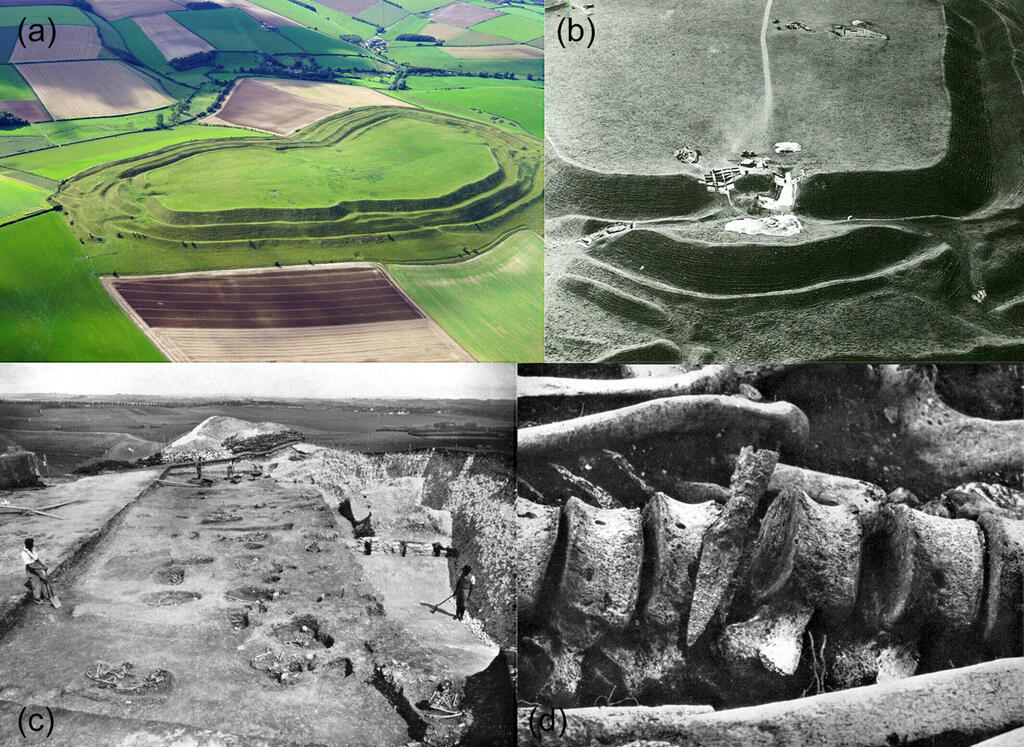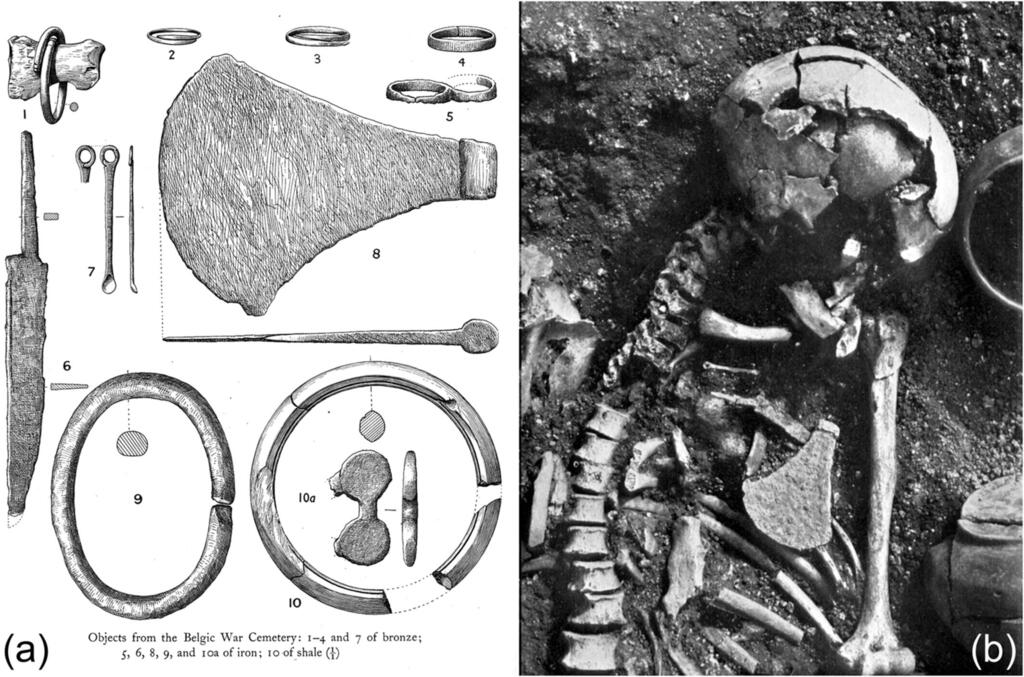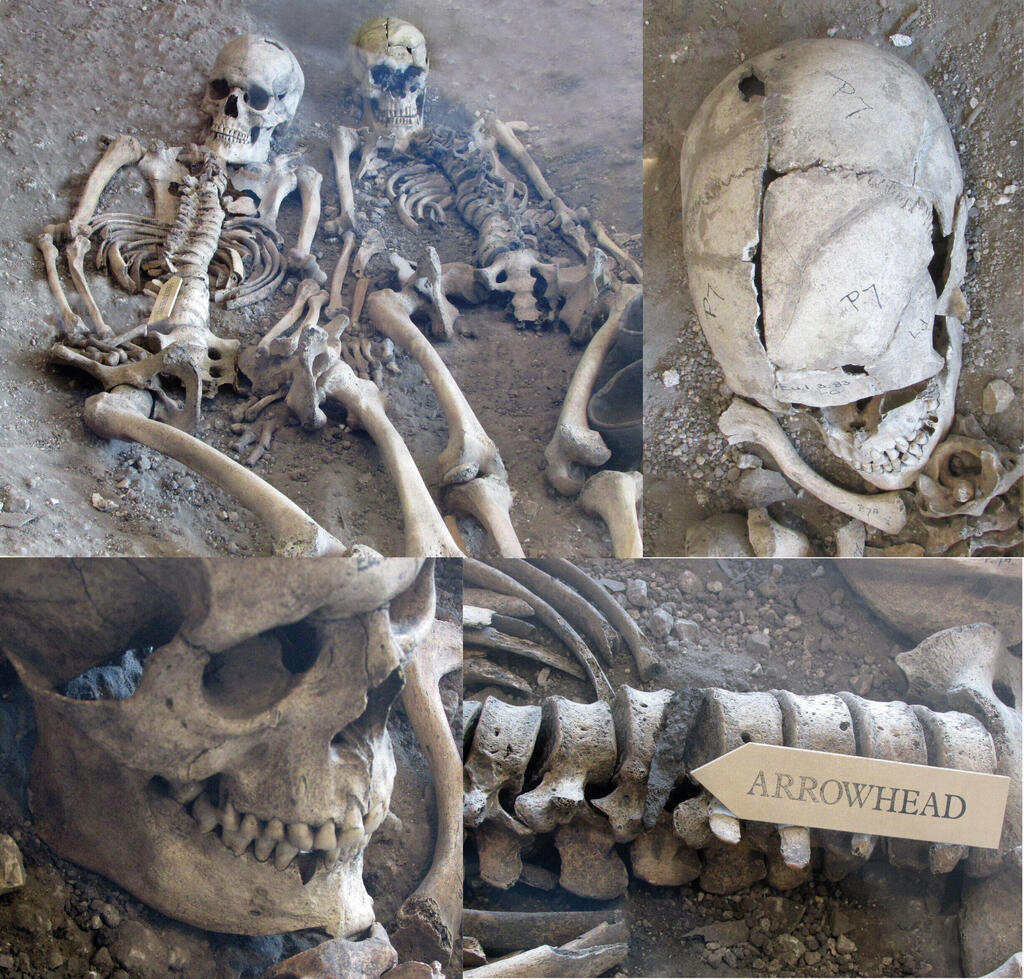In southwest UK's Dorset County, along the English Channel, sits Maiden Castle—one of the largest Iron Age hillforts in Europe. Built around 600 BCE, the massive, fortified site was conquered in 43 CE by a Roman legion led by Emperor Vespasian, marking the start of Rome’s invasion of Britain.
For decades, the remains of dozens of individuals found at the site were believed to belong to warriors killed in a single violent clash with Roman forces. But a new study by Bournemouth University researchers challenges that long-standing narrative, revealing a far more complex and drawn-out history of bloodshed.
According to the study, recently published in the Oxford Journal of Archaeology, the skeletal remains are not from one dramatic battle but rather from multiple episodes of fatal violence over several generations—between the late 1st century BCE and the early 1st century CE. Researchers suggest these deaths may have resulted from internal power struggles, executions or other localized conflicts prior to the Roman conquest.
“The discovery of dozens of human skeletons displaying lethal weapon injuries was never in doubt,” said Dr. Martin Smith of Bournemouth University’s Department of Archaeology and Anthropology, who analyzed the bones.
“However, by undertaking a systematic program of radiocarbon dating, we have been able to establish that these individuals died over a period of decades, rather than in a single terrible event.”
3 View gallery


Excavations and findings at Maiden Castle
(Photo: Society of Antiquaries of London and Dorset Natural History and Archaeological Society)
The discovery rewrites one of the UK's most iconic archaeological narratives. When the mass grave was first uncovered in 1936, many of the skeletons bore clear trauma to the skull and upper body, which researchers at the time interpreted as proof of a last stand by local defenders — believed to be members of the Iron Age Durotriges tribe — against the invading Roman army.
Get the Ynetnews app on your smartphone: Google Play: https://bit.ly/4eJ37pE | Apple App Store: https://bit.ly/3ZL7iNv
That interpretation quickly became embedded in British historical thought, especially in the lead-up to World War II. “Since the 1930s, the story of Britons fighting Romans at one of the largest hillforts in the country has become a fixture in historical literature,” said Dr. Miles Russell, a senior archaeologist at Bournemouth University who led the excavation.
“The tale of innocent men and women of the local Durotriges tribe being slaughtered by Rome is powerful and poignant… but the archaeological evidence now points to it being untrue. This was a case of Britons killing Britons, the dead being buried in a long-abandoned fortification. The Roman army committed many atrocities, but this does not appear to be one of them.”
3 View gallery


Burial items found at Maiden Castle
(Photo: Society of Antiquaries of London and Dorset Natural History and Archaeological Society)
The findings also open new questions about what remains undiscovered at Maiden Castle. According to Paul Cheetham, another member of the Bournemouth research team, the burial site reflects a diverse and stratified society in which identity and social status shaped burial practices.
"While Wheeler’s excavation was excellent, he was only able to investigate a fraction of the site," he noted. "It is likely that a larger number of burials remain undiscovered around the immense ramparts.”
He added that the blend of burial customs suggests other ancient cemeteries across the UJ may also have been misinterpreted. “The intermingling of differing cultural burial practices contemporaneously shows that simplistic approaches to interpreting archaeological cemeteries must now be questioned."


